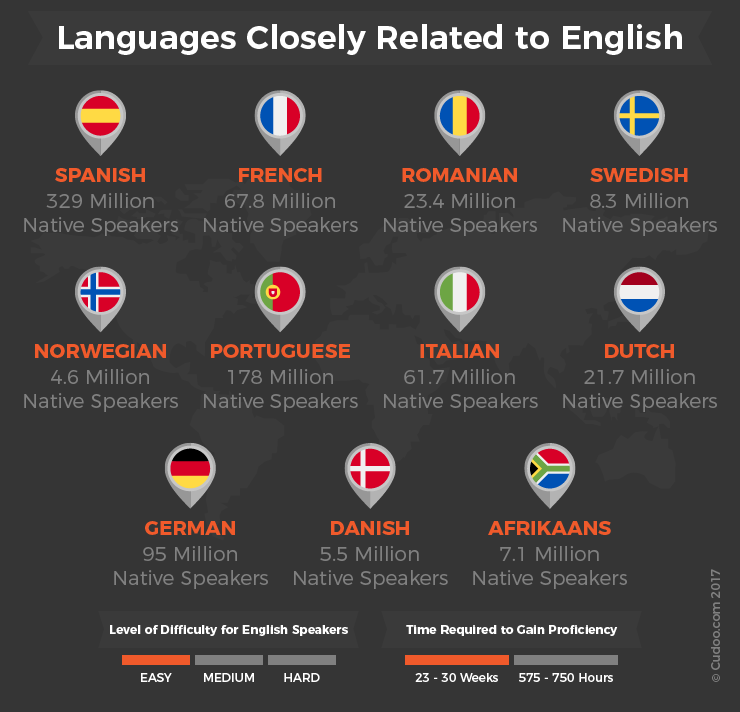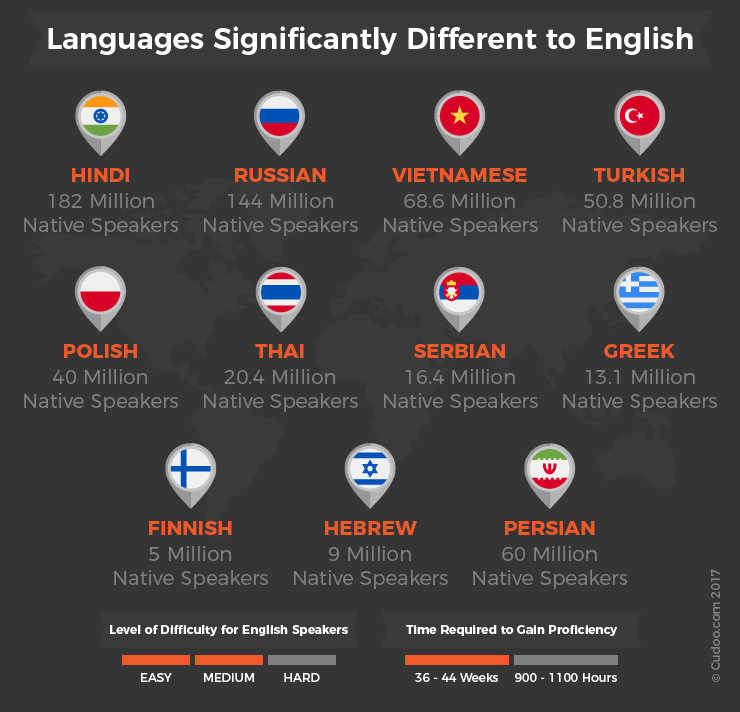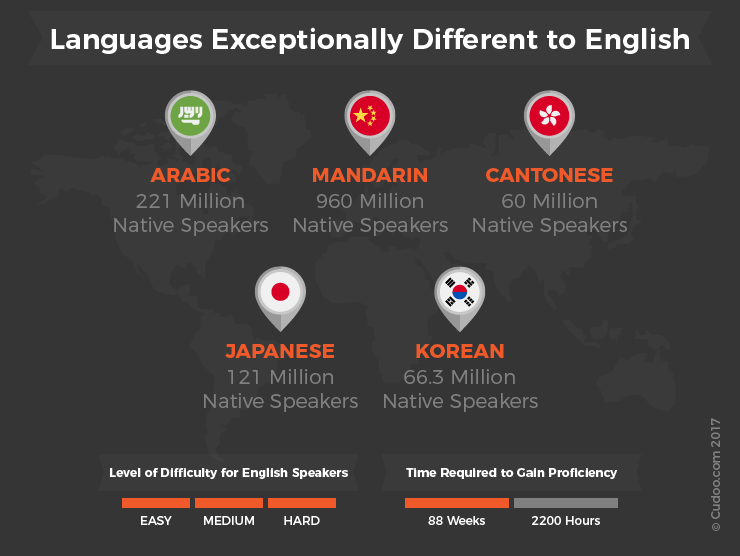Having the ability to communicate in more than one language is known to be beneficial for individuals on many different levels. Apart from the obvious social and personal benefits, foreign language skills increase your marketability, improve your resume and open doors to new professional and personal horizons. Multi-lingual people are known to be sharper, smarter and better problem solvers than mono-linguists. They have better soft skills, creativity and communication skills compared to their counterparts.
While all of this is fantastic, realistically learning a new language can be a challenging task to accomplish. We’ve all been there, flabbergasted by polyglots who fluently speak four or more languages with ease, wondering how smart do you have to be to do that!
Did you know that only 3% of the world population speaks more than four languages?
And only 1% of the world population can speak five languages fluently? Amazing! Right?
So how can you be one of them? Each learner is different and the time it takes to learn a new language depends on multiple factors such as the complexity of the target language, the time you can devote to learning it, the resources available to you, how similar it is to the language you are already fluent in, and ultimately, your motivation to learn.
Before we get into what are the hardest languages to learn for English speakers, let’s discuss why some language learners quit halfway and never reach the proficiency levels they aimed to achieve.
Effective language learning is impacted heavily by the following factors.
Time management: Difficult languages require more time than others and it is crucial to practice for extended periods of time regularly to avoid getting rusty.
Different grammatical structures: If you’re learning a language that uses a radically different grammatical structure of sentences from your native language, you’ll have a harder time if you do not practice.
Non-Verbal Environment: Apart from your training/learning period, if you are surrounded by a different language and have a non-verbal practicing environment, it will impact negatively on achieving proficiency in speaking. This is why it is highly recommended to spend some time in the natural habitat of the language for advanced levels.
Now that we’ve discussed the most common challenges, the following is a list of languages in order of difficulty, from easiest to the hardest languages to learn for English Speakers. The factors we’ve considered are mainly the similarities between the language and the average time frame required to reach a level of proficiency.

The majority of these languages are Western European languages and include Spanish, French, Romanian, Swedish, Norwegian, Portuguese, Italian, Dutch, German, Danish, and Afrikaans. In general, native English speakers take between 23 to 30 weeks (575 to 750 classroom hours) to gain proficiency in these languages.

These languages include Hindi, Russian, Vietnamese, Turkish, Polish, Thai, Serbian, Greek, Finnish, Hebrew, and Persian. Because of there linguistic and cultural differences, these languages take more time for English speakers to learn. The time frame could be anywhere between 36 to 44 weeks, and 900 to 1,100 classroom hours.

These five languages are known to be exceptionally difficult for English speakers to learn, and one of the factors that contribute to this are their completely different writing systems.
Isn’t it interesting that the most widely spoken language in the world, Mandarin Chinese with around 960 million speakers, is actually quite a tough cookie to crack for an English speaker?
Remember! They may be difficult languages, but they are not impossible to learn. Also, note that the difficulty levels are relative and can differ for each individual. To better understand why they are more difficult than others, let’s dive a little deeper into it.
Mandarin Chinese: Not to be confused with its cousins Taiwanese or Singaporean Mandarin is by far one of the most difficult languages to master for non-native speakers. Mainly due to its phonetics, a word said with even the slightest difference in pronunciation can dramatically change its meaning. Although known for its grammatical simplicity, with no gender-specific nouns or verb conjugations, because it is a tonal language, it becomes rather difficult to get the pronunciations right.
Arabic: Mainly because it has very little in common with any of the main European language families. Written from right to left, each alphabet can be written in four different ways depending on where in the world is it placed. The vowels are not written and if that wasn’t enough, there are many alphabets and their sounds that are unique to Arabic and not at all present in the English language. Being able to say them right and getting used to the different grammar rules makes it number 2 on our list.
Japanese: Other than remembering thousands of characters to be able to write anything, the Japanese language has 3 standard writing systems, each with its own alphabet. Although, speaking Japanese is relatively easier, at least compared to Mandarin Chinese. However, most English speakers do not attempt Japanese and try out the Romance languages first due to the similarities between the languages.
Korean: Whether or not you’re an English speaker, Korean is a tough language to learn for all. Mainly because it is one of the most unique languages in the world. Not only does the language bear no resemblance to other languages, and the grammar is also radically different from English.
Cantonese: Much like Mandarin Chinese, Cantonese is a highly tonal language with 6 tones and diphthongs (a combination of two vowels) making it difficult for non-tonal native speakers. Imagine not being able to raise your voice to put emphasis on a word, like you normally would, simply because it would complete changing the meaning of what you were going to say.
Having said that, the idea is not to scare you away from these languages. English speakers can and do learn these languages and get to conversational levels with dedication and practice. The idea is to inform you why they are challenging so you can tackle it accordingly. Also, remember that you don’t always need to be fluent in a language to get by. Even if you are able to converse with simple phrases and sentences and get your point across, that’s quite impressive for natives and will definitely give you an edge over others.
It’s very important to remember that language difficulty is relative, and what may take one learner 3 weeks to learn could be learned in a few days by another learner. So are you up for a rewarding challenge? Start learning any language with our online courses.
Andrie Steliou
Latest posts by Andrie Steliou (see all)
- 8 Ways to Help Keep Your Child Focused and Engaged in Online Learning - October 19, 2022
- How to Improve Social Intelligence Skills? - May 10, 2022
- How to Improve Organizational Skills at Workplace? - May 6, 2022

